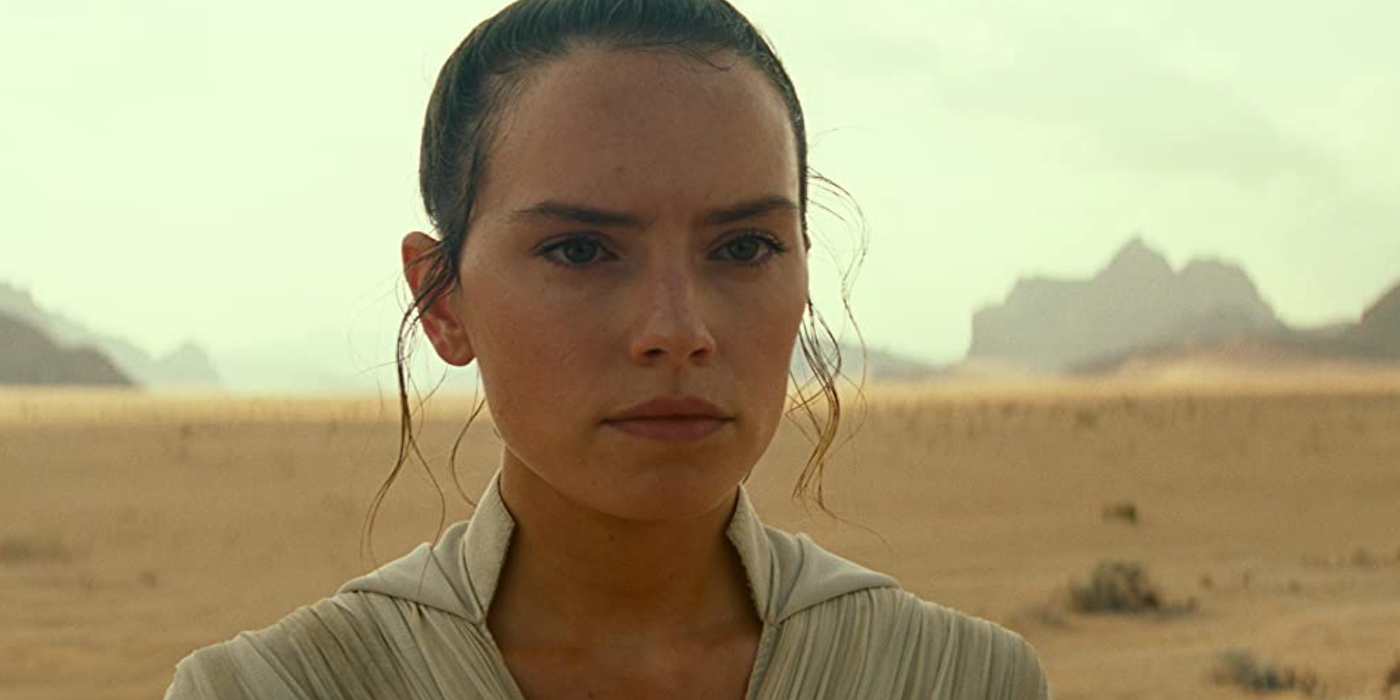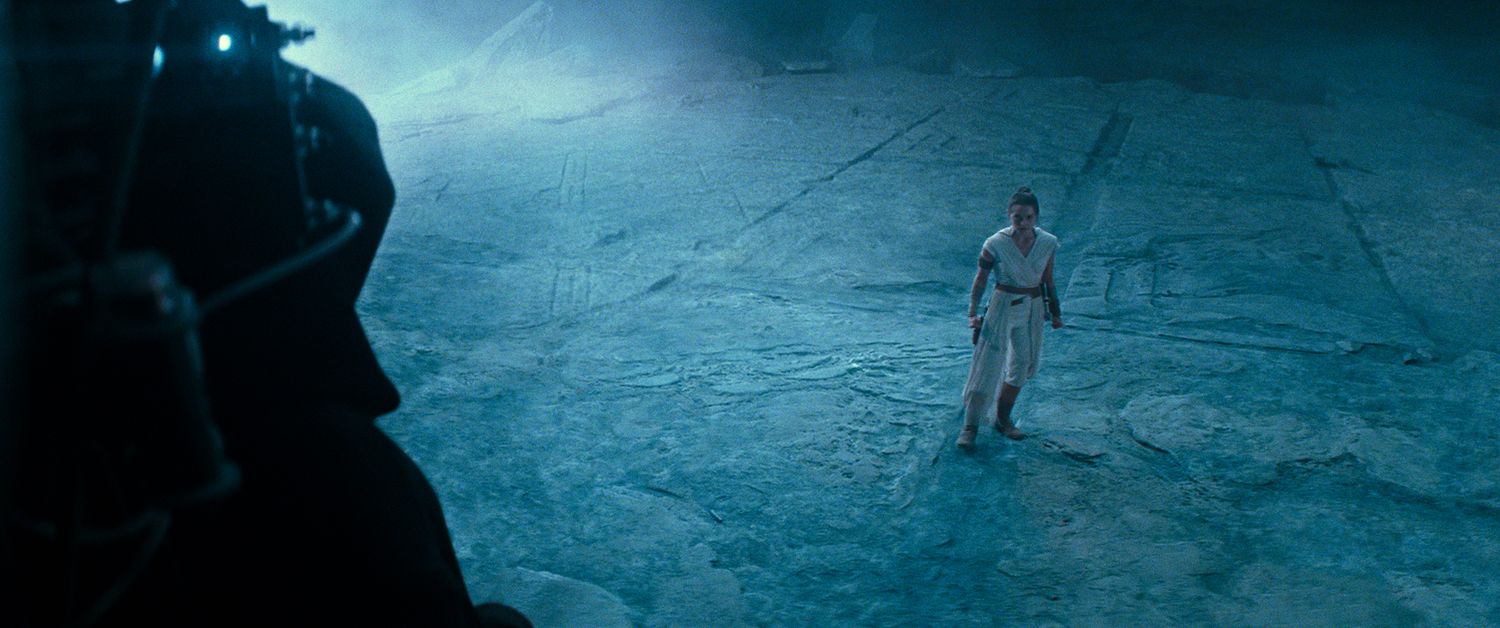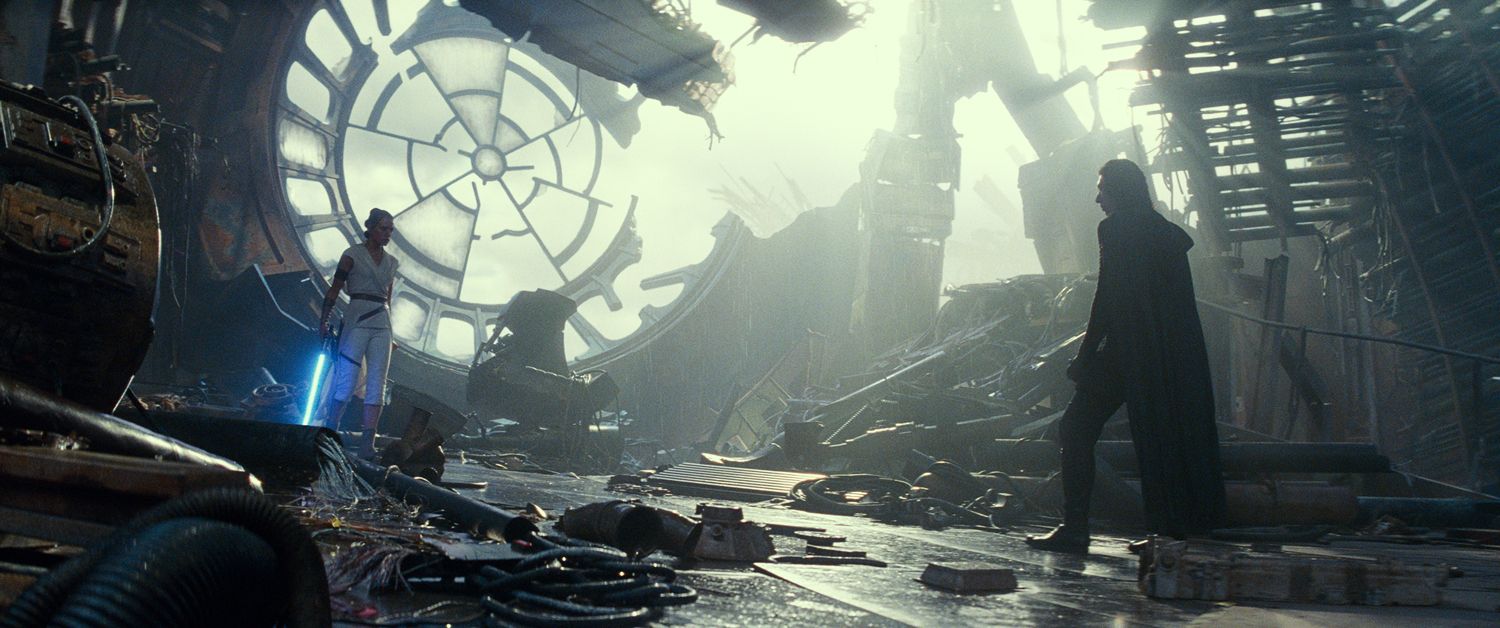[Editor's note: The following contains spoilers for The Rise of Skywalker.]
The final scene of Star Wars: The Rise of Skywalker has Rey coming to Tatooine to a home that could have been Luke’s (it’s the same kind of sand igloo). She buries both Luke and Leia’s lightsabers, and then as she prepares to leave, she runs into some random woman who asks Rey what her name is. “Rey”, she responds. The woman pushes further asking if Rey has a last name. Rey turns to the side and sees the force ghosts of Luke and Leia smiling at her (the woman is presumably just standing there wondering what Rey is looking at). Rey then adds, “Skywalker.” The music then swells, the visuals echo Luke looking towards the twin suns of Tatooine from A New Hope, and the movie ends.
Whereas a constant theme of The Last Jedi was, “Let the past die. Kill it if you have to,” director J.J. Abrams cannot get enough of the past. It’s a film that loads up on callbacks and fan service, but it does so at the expense of anything new. In this way, the ending of The Rise of Skywalker is fitting, as Rey doesn’t take a new name for her own or is content with just being Rey. She needs to be a Skywalker and while you can argue that taking the last name of Luke and Leia is her way of honoring that legacy, it also makes her trapped by the past rather than her own person.
I can see what Abrams and writer Chris Terrio were going for in the arc of Rey’s story. You have Rey, someone who has been looking for the truth of her lineage only to discover that her grandfather was Emperor Palpatine, the evilest man in the galaxy. The “twist” of it all is that rather than choosing to follow in her grandfather’s footsteps and become a Sith Lord, she channels the spirits of 1,000 generations of Jedi, defeats Palpatine, and then takes the name of Skywalker, so the Skywalker lineage continues even though Luke had no children (that we know of; please stay tuned for Star Wars: Luke’s Lost Lovechild in 2029) and Leia’s only child, Ben, is now dead. The galaxy apparently needs a Skywalker, and so Rey, deemed the unlikeliest person for the flimsiest of reasons, will be the next to bear that name.
Because Abrams cannot let go of the past, it dominates everything about his movie, and it makes The Rise of Skywalker feel instantly stale as a result. The film is deathly afraid of originality, so it retreats into myth and name recognition, which is why Rey decides to call herself Rey Skywalker because anything new is bad. The Last Jedi challenged the status quo, and The Rise of Skywalker firmly answers back that the status quo isn’t to be challenged but embraced.
What the ending of The Rise of Skywalker says is that you are owned by the past, which is great for Disney, whose business model is selling the past. The prison of nostalgia has never been so clearly highlighted, and it’s fitting for a movie where the main hero is the granddaughter of Palpatine, returns to the ruins of the Death Star, flies Luke Skywalker’s old X-Wing to the final battle, and then takes the name “Skywalker.” These things aren’t meant to be questioned or reexamined. They’re meant to be cherished and then regurgitated for the next generation who won’t get their own identity; just the ones that came before.
For Abrams, giving Rey the name “Skywalker” is probably an act of affinity, a way to show love towards the Star Wars franchise. But it’s a lot like saying I love a home that I’ve never left. What appears to be reverence instead ends up looking a lot like fear, and in the end, you’re stuck in a place you never moved beyond and trying to frame it as personal growth.
For more on The Rise of Skywalker, here’s the Star Wars movies ranked by Rotten Tomatoes score, Matt Goldberg’s review, and J.J. Abrams talking about Rey's parents. You can also click here for more about the problems with Rey's parentage.



